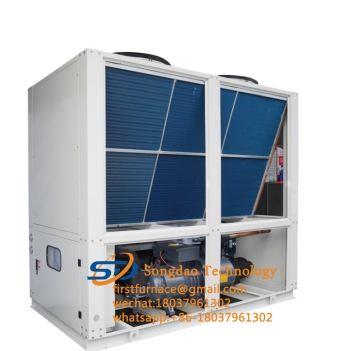- 08
- Oct
What are the common protections in refrigeration systems?
What are the common protections in refrigeration systems?

High pressure protection: High pressure protection is to detect whether the refrigerant pressure in the system is normal. When the pressure exceeds the allowable range, the pressure switch will act, and the abnormal signal will be transmitted to the high pressure controller. After processing, the refrigeration system will be stopped and the fault will be displayed. come out.
Low-pressure protection: The low-pressure protection detects the return air pressure in the system, and its function is to prevent the compressor from being damaged by the system pressure being too low or there is no refrigerant running.
Oil pressure protection: A device that prevents the bearing or other internal components of the compressor from being damaged by oil shortage due to low lubricating oil pressure. If the compressor oil volume is reduced or the oil is cut off, the high-speed compressor will be seriously damaged. The protection device is an important part to ensure the safe operation of the compressor.
Antifreeze protection: If the evaporator is too dirty or the frost is too serious, the cold air cannot fully heat exchange with the hot air outside, causing the internal unit to freeze. The indoor antifreeze and thawing protection is for the compressor to make the compressor before the internal unit freezes. Shut down to protect the compressor.
Current protection: When the line is short-circuited, one of the important features is that the current in the line increases sharply. This requires setting a corresponding protection device that acts in response to the increase in current when the current flows through a certain predetermined value. Current protection.
Overheating protection: The internal temperature of a well-designed motor that runs under specified conditions will not exceed the allowable value, but the motor runs under too high or too low voltage, or when the motor runs in a high-temperature environment, the internal temperature of the motor exceeds the allowable value. During frequent starting, the temperature may be too high due to excessive starting current. .
Phase sequence protection: The phase sequence protection is a protection relay that can automatically identify the phase sequence to prevent some refrigeration compressors from turning the motor reverse after the power phase sequence is reversed (three live wires are connected in reverse order), which may cause accidents or equipment damage.
For example, scroll compressors and piston compressors have different structures. Since the inversion of the three-phase power supply will cause the inversion of the compressor, it cannot be inverted. Therefore, it is necessary to install a reverse phase protector to prevent the reverse rotation of the chiller. When the reverse phase protector is installed, the compressor can work in normal phase. When the opposite phase occurs, it is necessary to change the two lines of the power supply to the normal phase.
Unbalance protection between phases: Unbalanced voltage between phases will cause three-phase unbalanced currents, which will lead to greater temperature rise-set an overload relay. In the largest phase of current, the rate of increase in temperature rise is approximately twice the square of the voltage imbalance rate. For example, a voltage imbalance of 3% will produce a temperature rise of about 18%.
Exhaust temperature protection: Excessive exhaust temperature can cause refrigerant decomposition, aging of insulating materials, carbonization of lubricating oil, damage to air valves, and clogging of capillary tubes and filter driers. The main protection method is to use a thermostat to sense the exhaust temperature. The thermostat should be placed close to the exhaust port. When the exhaust temperature is too high, the thermostat will act and cut off the circuit.
Housing temperature protection: The housing temperature will affect the life of the compressor. Excessive temperature of the cabinet may be caused by insufficient heat exchange capacity of the condenser, so you should check the scenery or water volume of the condenser, and whether the water temperature is appropriate. If air or other non-condensable gases are mixed in the refrigeration system, the condensing pressure will rise. Overheating; if the suction temperature is too high, the casing is prone to overheating. In addition, overheating of the motor will also overheat the casing.
